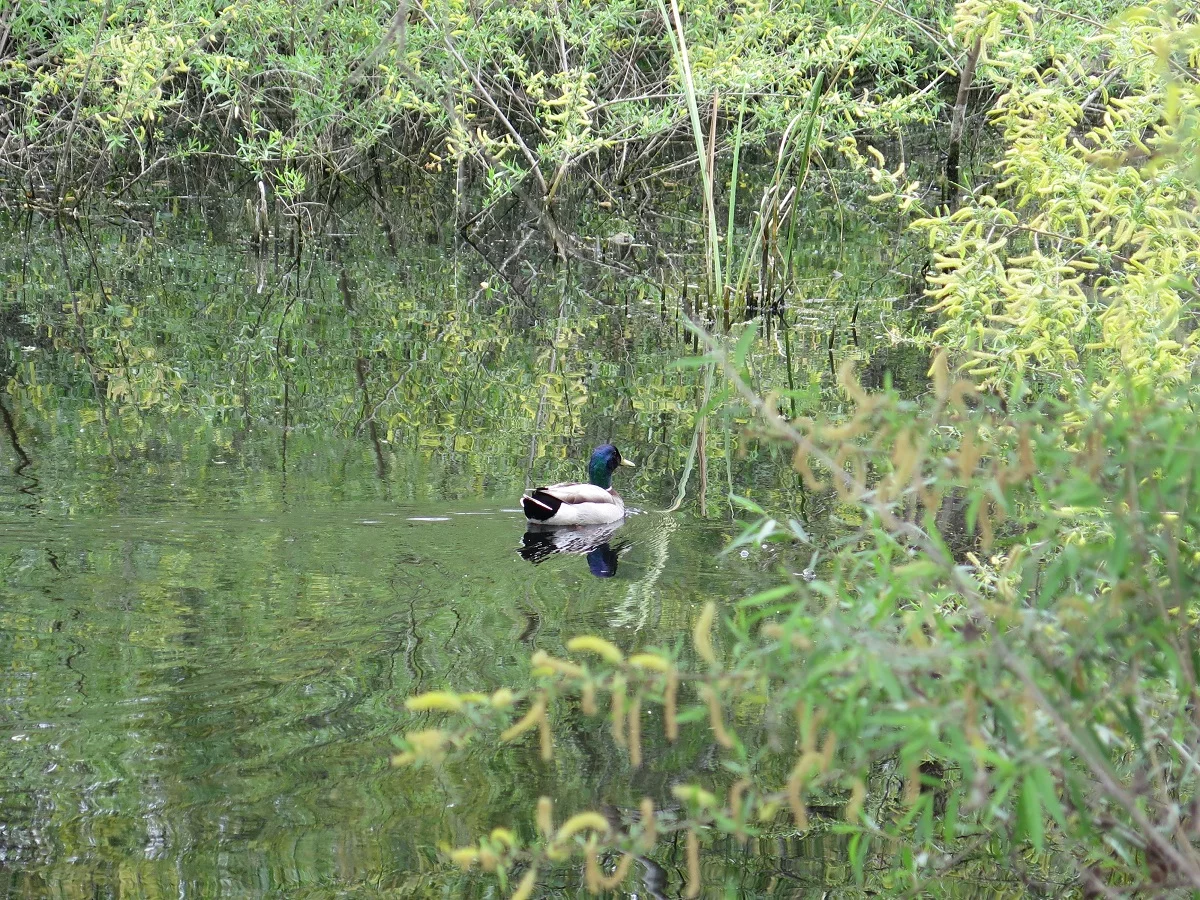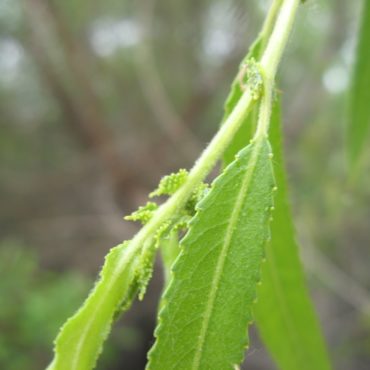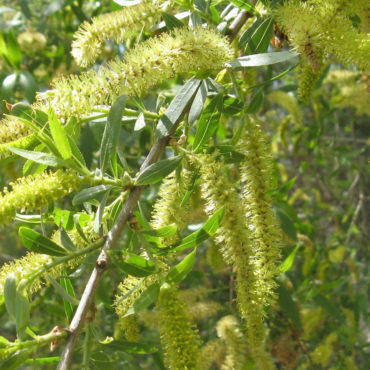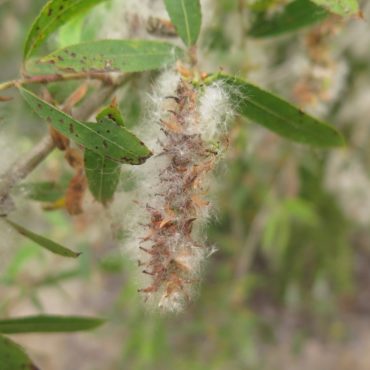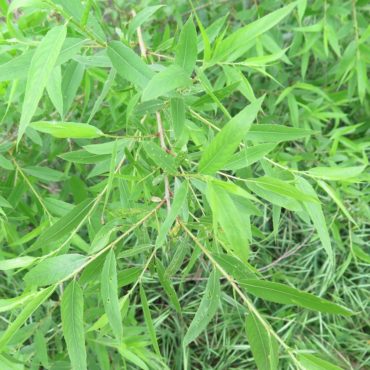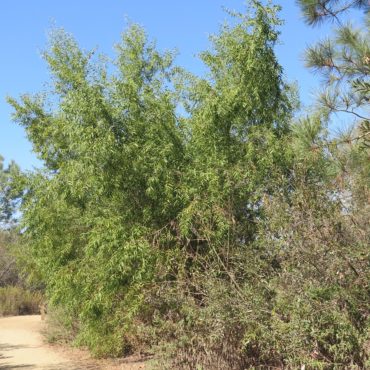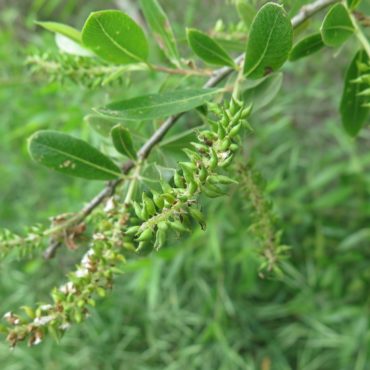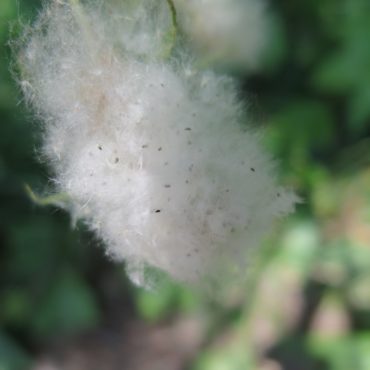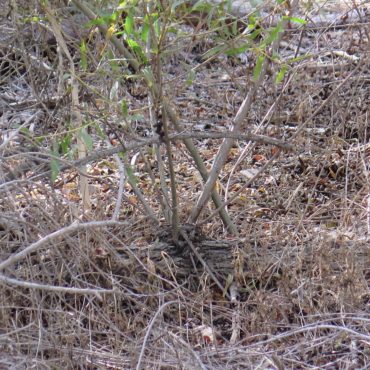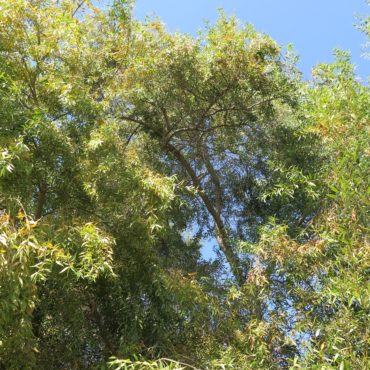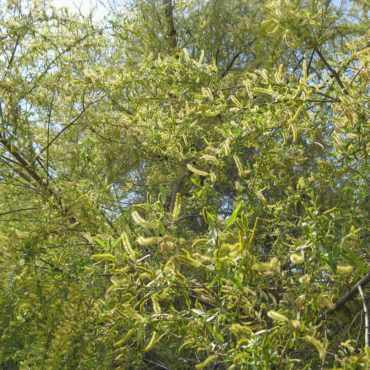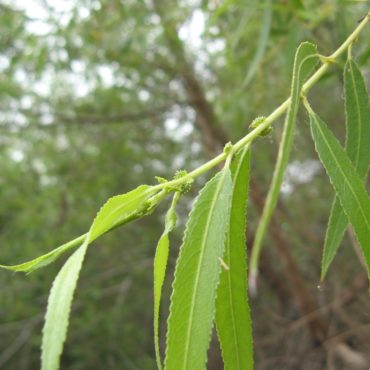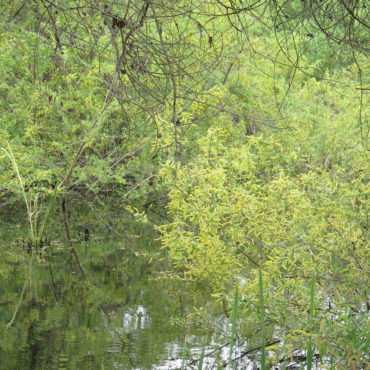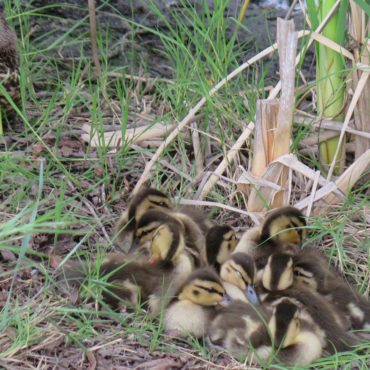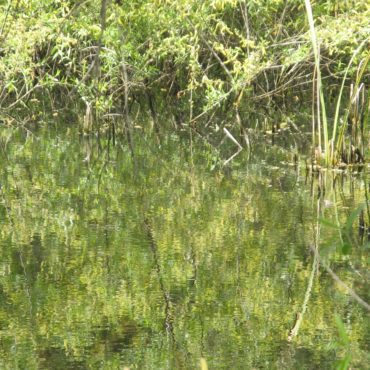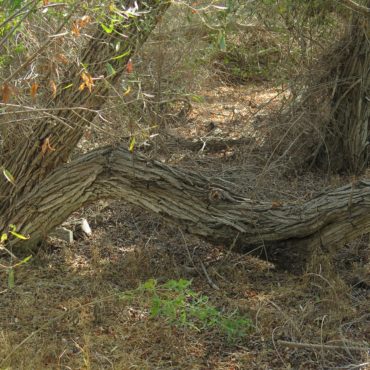It is said that the sound of the breeze through the willow leaves is the sound of whispering elves.
English legend 508
Goodding’s black willow (or black willow, Salix gooddingii) was once a dominant tree in an extensive riparian vegetation along the slow-moving, meandering rivers of the southwest United States. Today, because of changing land use, water diversions and grazing, this vegetation is threatened and Goodding’s black willow is restricted to isolated areas.
Goodding’s black willow is the tallest willow in the Reserve. Our few trees can best be seen along the loop trail at the Nature Center, where they rise above the smaller, but more abundant arroyo willow (S. lasiolepas). Unlike arroyo willow, which flowers in late winter before the leaves appear, Goodding’s black willow blooms as the leaves open in March, splashing the ponds with the color of spring.

